Few battles loom as large in modern Marine Corps history, like the Battle of Chosin Reservoir. A massive, combined force of U.S. Marines and U.S. Army soldiers, along with troops from Britain and South Korea, suddenly found themselves surrounded, outnumbered by around four-to-one and forced to fight their way out while enduring subzero temperatures and often knee-deep in snow.
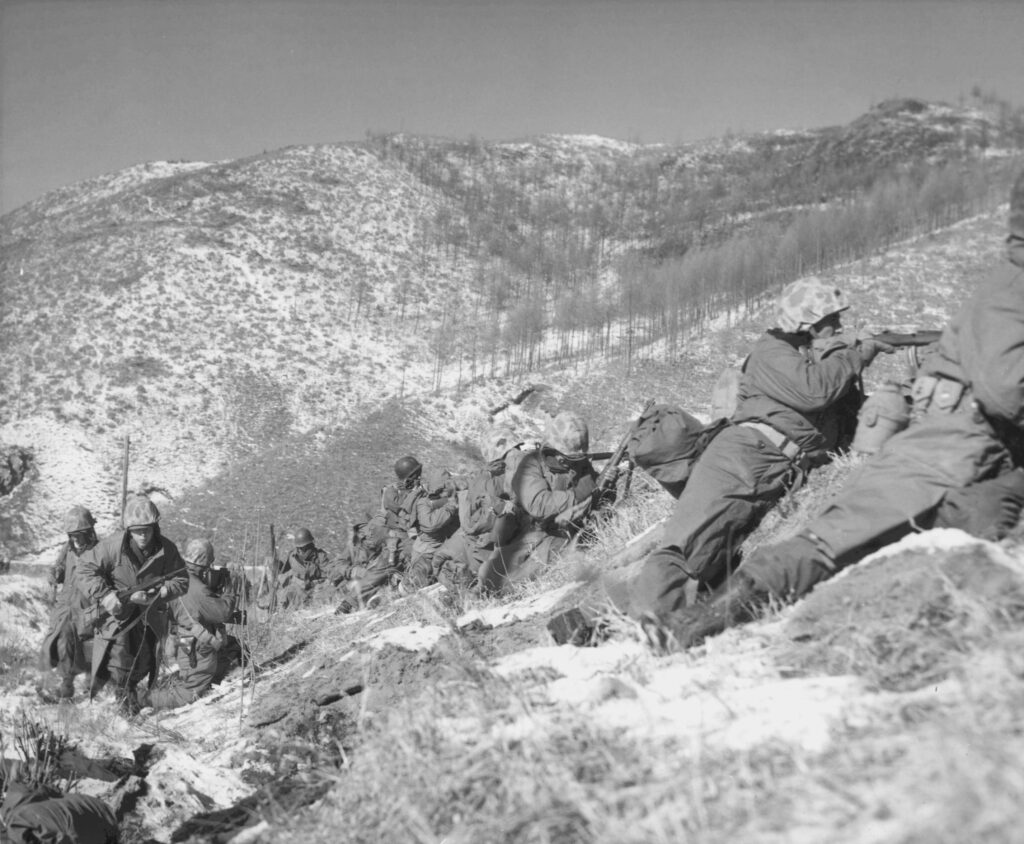
The “Frozen Chosin” and Strategic Consequences
The “Frozen Chosin” may not get a specific mention in the Marines’ Hymn, but it was a defining moment for the Corps. For any other fighting force, being surrounded and outnumbered might have been a disaster. For the men of the 1st Marine Division, it simply meant they would be attacking in a different direction. Either side could technically claim victory; the Chinese People’s Volunteer Army did manage to retake the battlefield, but not before suffering unbelievable losses in what devolved into a brutally cold slugfest at the hands of United States Marines. Most importantly, the UN forces would survive to fight another day.
North Korea won an impressive series of victories when it launched an invasion of its southern neighbor on Jun. 25, 1950. The invasion caught both American and Republic of Korea (RoK) forces by total surprise. The North Korean People’s Army (KPA) advanced quickly down the Korean Peninsula while American forces, still drawing down from their massive World War II size, were ill-prepared to meet the sudden, overwhelming onslaught.
Despite being pushed back to the port city of Pusan (modern-day Busan), the American and South Korean forces held out around a tiny perimeter until they could be reinforced and resupplied. On Sept. 15, 1950, X Corps, a combined force of the U.S. Army’s 7th Infantry Division and the 1st Marine Division, along with more than 8,000 RoK soldiers, landed at Inchon behind North Korean lines. The next day, 180,000 troops behind the Pusan Perimeter broke out and went on the offensive. By Sept. 28, Seoul was back under UN control, and North Korean forces fell back across the 38th parallel.
General Douglas MacArthur, bolstered by his success at Inchon, next launched a two-pronged invasion of North Korea. The U.S. 8th Army advanced up the western coast of the Korean Peninsula while the RoK I Corps and the U.S. X Corps marched up the eastern coast after an amphibious landing at Wonson. It was also a dazzling success: UN troops crossed the 38th Parallel on Oct. 7 and were in Pyongyang within two weeks.
But there was a disaster looming in the shadows. When Communist Party Chairman Mao Zedong realized the Americans intended to unite the Korean Peninsula under southern rule and the KPA couldn’t stop it, he secretly sent the Chinese People’s Volunteer Army, more than 120,000 troops, into North Korea.
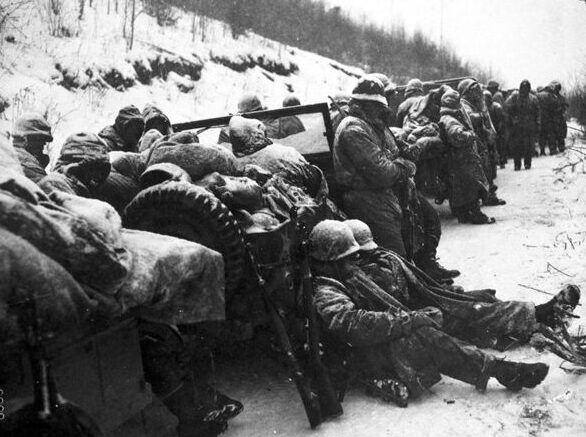
The Chosin Reservoir: A Desperate Struggle for Survival
On Oct. 30, the 1st Marine Division was ordered to relieve the RoK I Corps in the area of the Chosin Reservoir in the country’s Siberian northern region. The Chinese has already made their presence known. What the UN didn’t know was just how many Chinese troops were present. The South Koreans had already made contact with the Chinese PVA south of the reservoir, and by Nov. 2, the Marines had engaged an entire division of Chinese troops outside of Sudong, 200 kilometers south of the reservoir.
But MacArthur didn’t believe the Chinese troops posed a threat. He wrote off the danger and continued pressing north on all fronts, favoring an advance conducted as quickly as possible to keep the enemy off guard. Despite the UN’s speed, the weather was beginning to catch up with them, setting the stage for a brutal winter. By Nov. 25, the temperature had dropped to below freezing, driving snow limited visibility, and weapons and vehicles started to fail.

MacArthur didn’t know the Marines in the region around Chosin were walking into a trap; the Chinese were luring them towards the Chosin Reservoir, where they would be outnumbered and surrounded, with their main supply route cut off. Luckily for the Marines, their division commander, Maj. Gen. Oliver P. Smith was more worried about the supply lines than MacArthur. He risked his career with his caution, making sure they were supplied with ammunition and supplies at critical junctures along the way. It slowed the Marines’ progress northward but proved valuable when the real shooting started.
On Nov. 27, the PVA suddenly launched a series of attacks all around the reservoir area and along the road to Koto-ri. At the same time, an entire Chinese division cut the communications lines between Yudam-ni and Hagaru-ri. The UN X Corps was spread too thin in the reservoir area, but the 1st Marine Division’s slower progress meant that when the Chinese attacked, most of the division was together at Yudam-ni, more than 25,000 men strong.
Breaking Out of the Chosin Reservoir
In all, the UN had some 30,000 troops in the reservoir area, but they were all cut off by as many as 120,000 Chinese troops. Luckily, the Chinese focused on the attack at Yudam-ni, unaware they were fighting most of the 1st Marine Division there. The Chinese 9th Army Group led by Gen. Song Shilun opened the battle with a series of multi-day attacks, probing American defenses during the day and assaulting the Marines at night. These mass formation attacks with mortar support were mostly fought off with the help of nonstop artillery and close-air support.
At Yudam-ni, the 5th and 7th Marines dug in to repel nonstop PVA attacks, with assaults that often devolved into hand-to-hand combat. U.S. Army Regimental Combat Team 31, also known as Task Force Faith, guarded the Marines’ right flank east of the Chosin. It would be destroyed by the Chinese. Meanwhile, Fox Company, 2nd Battalion, 7th Marine Regiment was cut off from the rest of the division along the Toktong Pass, which connected Yudam-ni to Hagaru-ri. If the company couldn’t hold its position, the 8,000 Marines at Yudam-ni would be cut off and captured by the Chinese. For five nights, the 220 men of Company F held off more than 6,000 Chinese soldiers. It was one of the most critical points of the entire battle – maybe the entire war – and the Marines of Fox Company held on.
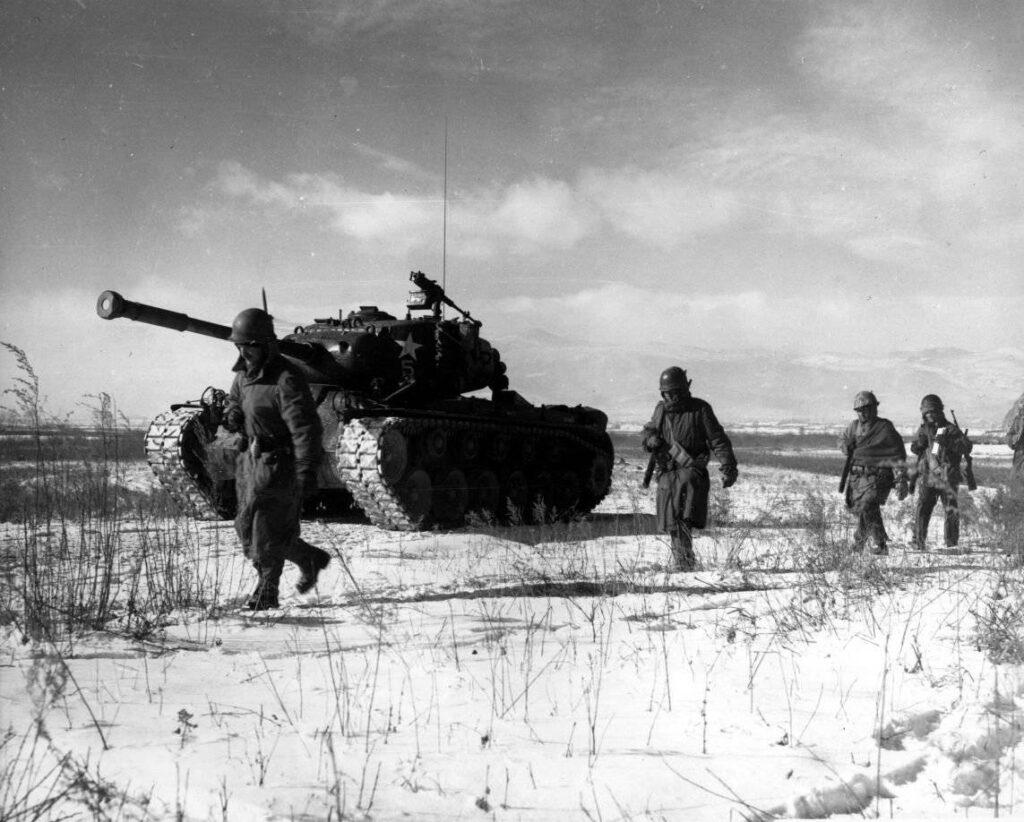
At Hagaru-ri, the area was more lightly defended, but the Chinese were delayed in attacking the Marines there, so the defenders were ready for the assault when it came. What they weren’t ready for was the overwhelming number of enemy troops. The enemy forced open gaps in the Marines’ perimeter, but as the forces began to mingle, the Chinese broke off the main thrust of the attack and began looting food and supplies instead. This bought the Marines time to order a counterattack, push the enemy back, and close the gaps in their lines.
Back at Koto-ri, Col. Lewis “Chesty” Puller was assigned to lead a thrust north from Koto-ri to open the road to Hagaru-ri and deliver reinforcements and supplies. Dubbed Task Force Drysdale, it included 921 members of the British 41 Commando and two companies of Marines. In trying to resupply and reinforce the defenders of Hagaru-ri, the task force fought bravely and fiercely against a determined and numerous enemy but lost nearly two-thirds of its men on the way. Only 300 troops would be able to fight once they arrived at Hagaru-ri.
By the end of November, X Corps commander Maj. Gen. Edward M. Almond realized the only chance his troops had of getting out of the Chosin meat grinder was fighting their way to a friendly port and evacuating by sea. The Marines and the cold were inflicting heavy casualties on the poorly-equipped Chinese troops, but the UN defenders couldn’t hold out forever. MacArthur ordered the Marines to make their way to the port of Hungnam.
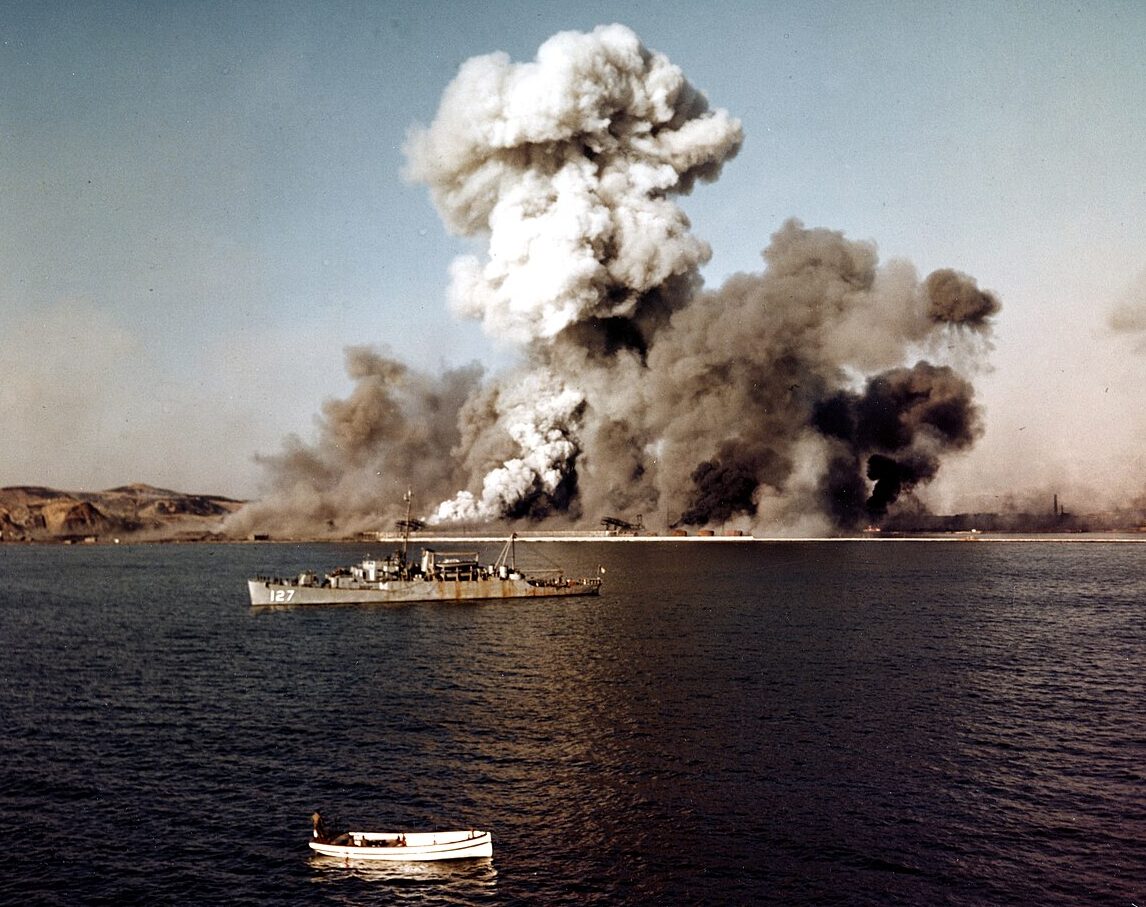
On Dec. 6, the UN prepared to break out of the area, led by the 7th Marines in the front with the 5th Marines in the rear. The move was slow, but the 5th Marines maintained the perimeter around Hagaru-ri despite nighttime assaults from two Chinese divisions, while the 7th Marines cleared the road by capturing the high ground along the route. By the end of Dec. 7, everyone had arrived in Koto-ri – but they would still need to fight their way out of the Chosin Reservoir area.
Poor weather, ambushes, and blown bridges all contributed to the UN forces’ slow move toward Hungnam, but they fought their way through all of it. They even assembled a portable bridge dropped by the U.S. Air Force in the Funchilin Pass, leaving the pass on Dec. 11, the same night they reached the perimeter around Hungnam. Some 193 ships evacuated all UN personnel and their equipment, along with 14,000 Korean refugees. The last ship departed the port on Dec. 24, destroying the port facilities as it left.
The fighting at the Chosin Reservoir left 4,385 US Marine Corps, 3,163 US Army, 2,812 South Korean, and 78 British Royal Marine casualties, along with more than 7,000 casualties related to the extreme weather. Most importantly, much of the UN’s fighting capabilities survived to fight another day. The Chinese lost 12 divisions of men fighting the Marines, and the extreme cold, experienced soldiers the People’s Volunteer Army could not replace. They managed to keep North and South Korea separate, returning all of North Korea to communist rule by the end of 1950. Since 12 of China’s 30 divisions in North Korea were completely destroyed at the Chosin Reservoir, the communists’ hopes of uniting Korea under North Korean rule were also dashed forever.
Read About Other Battlefield Chronicles
If you enjoyed learning about the Chosin Reservoir, we invite you to read about other battlefield chronicles on our blog. You will also find military book reviews, veterans’ service reflections, famous military units and more on the TogetherWeServed.com blog. If you are a veteran, find your military buddies, view historic boot camp photos, build a printable military service plaque, and more on TogetherWeServed.com today.
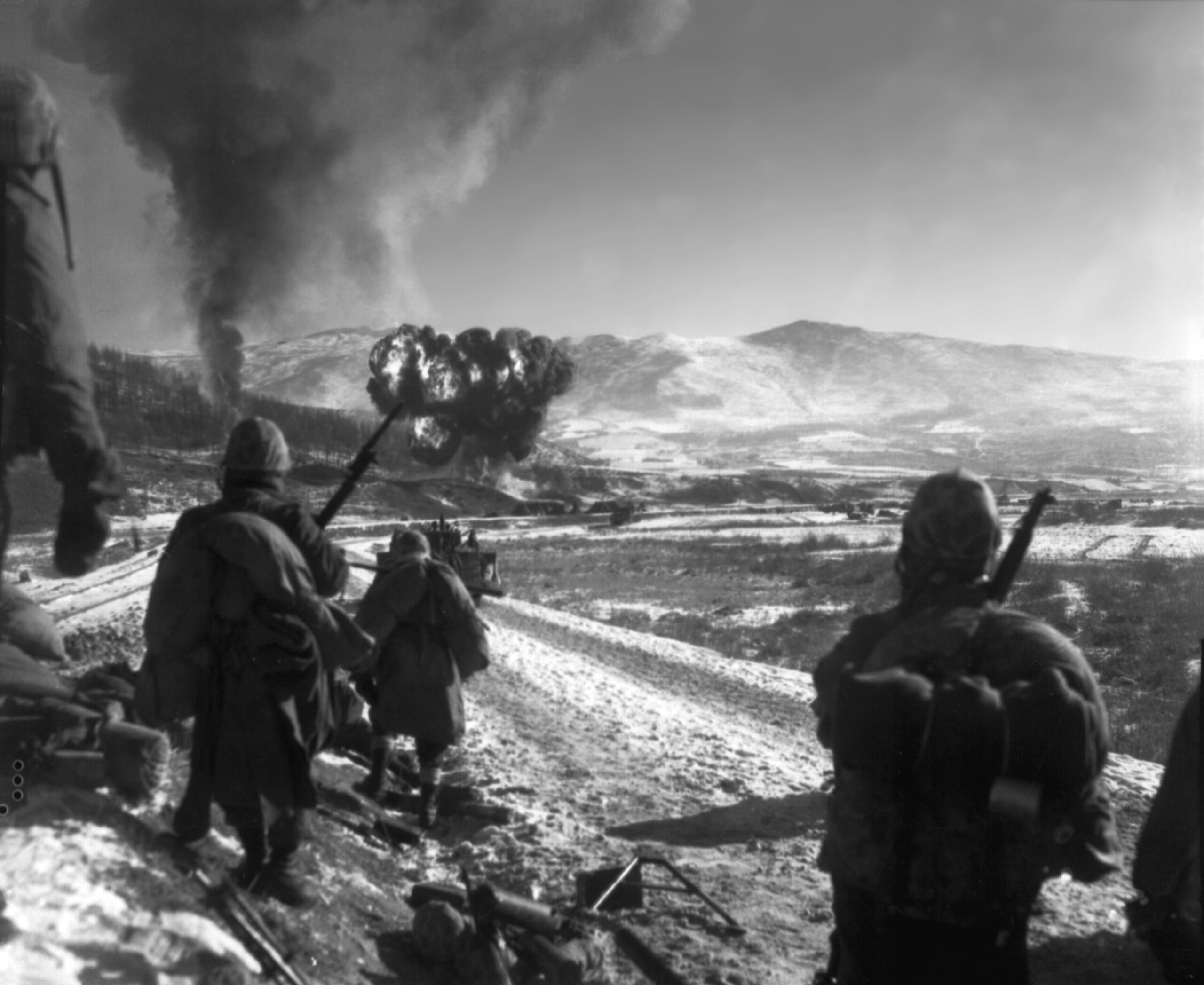
0 Comments